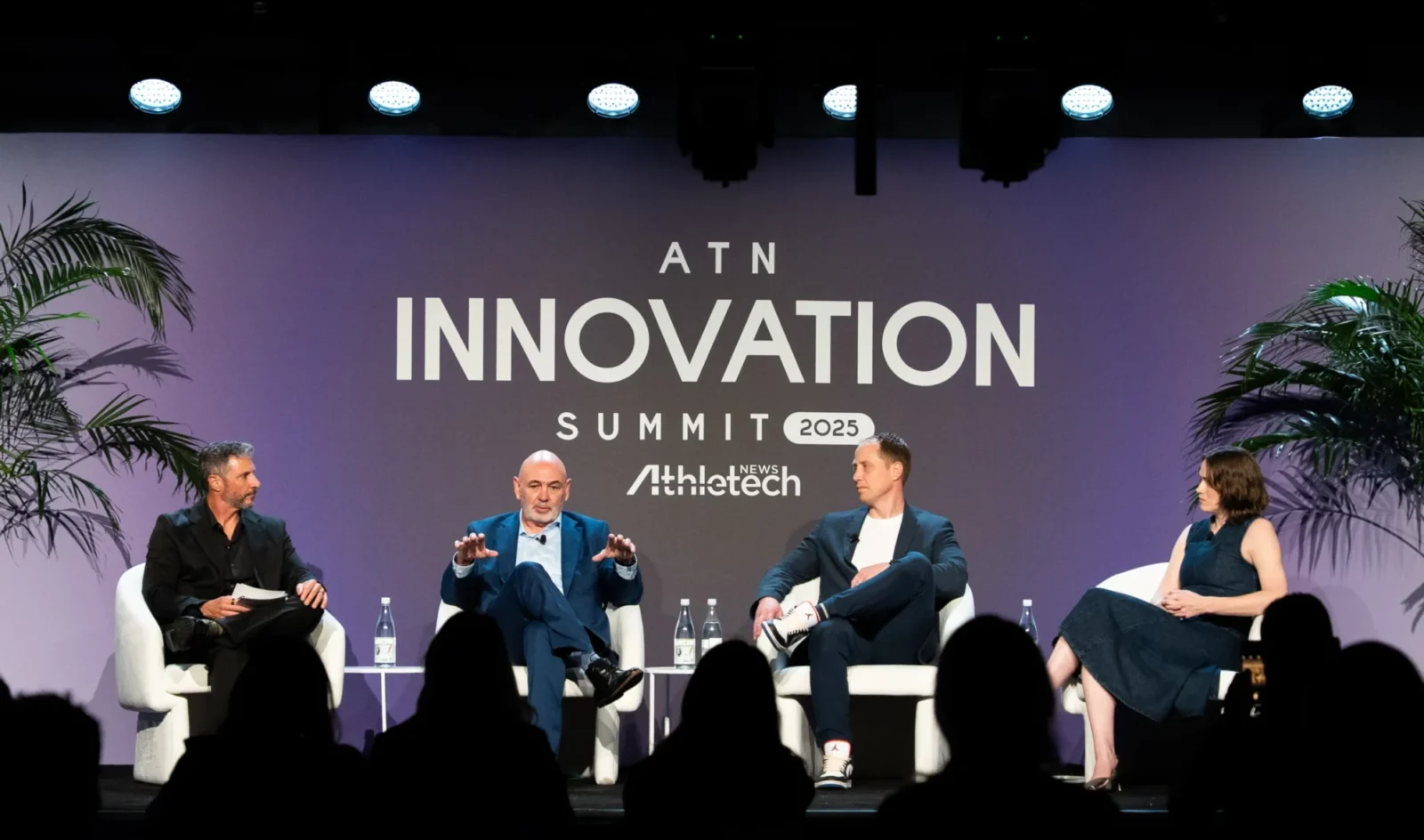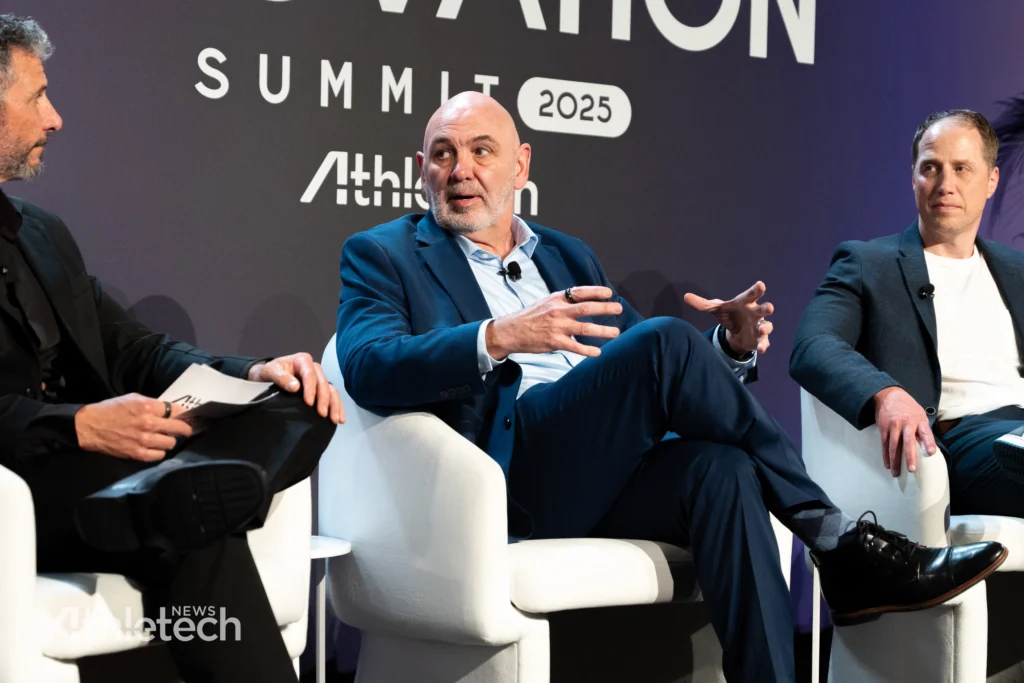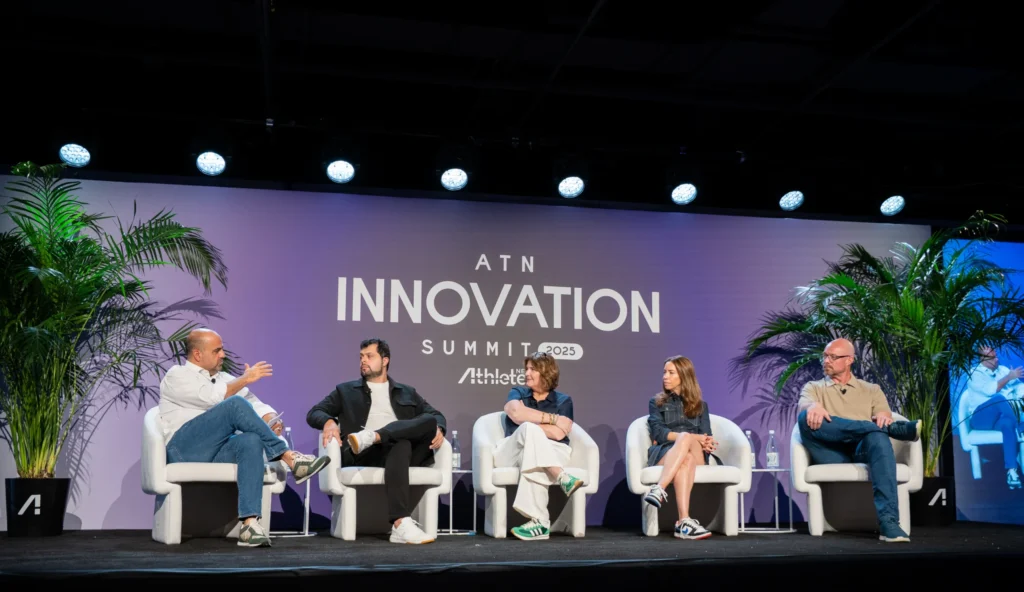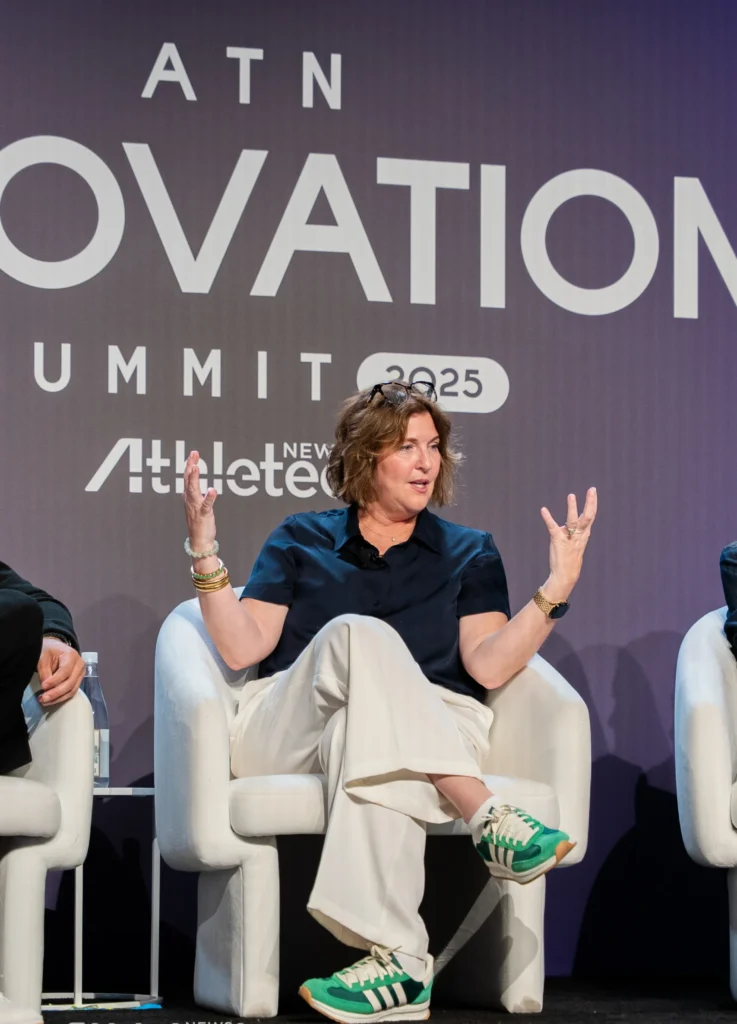Inside the Fitness Industry’s AI Overhaul: From Data Chaos to Personalization

At the ATN Innovation Summit, fitness leaders showed how AI is moving from buzzword to bottom line
As AI continues to dominate headlines in 2025, two panels at the ATN Innovation Summit 2025 made one thing clear: transformation in fitness takes more than tech hype.
Leaders from across the industry pulled back the curtain on the operational realities behind innovation, from reinventing outdated data systems to rethinking loyalty strategies and scaling personalization without losing the human touch.
Personalization Without Losing the Human Touch
In the session titled “More Than a Buzzword: How AI Is Transforming Fitness Right Now,” moderated by Eric Malzone, host of The Future of Fitness podcast and ATN’s “Master Knowledge” series, panelists didn’t waste time on hypotheticals. With the AI fitness and wellness market projected to hit $35 billion by 2031, the focus was squarely on execution.
Dana Milkie, general manager at EGYM, said the goal isn’t to replace trainers but to scale their impact.
“We sit on over 9 million workouts and more than 500 million assessments,” he said. “By layering AI on top, we’re creating hyper-personalized programs that adjust to both the member’s data and the inventory of the gym itself.”
That personalization is already visible in EGYM’s new Genius AI system, which tailors workout plans based on available equipment and user goals. The platform doesn’t just generate routines; it provides weight recommendations and rep ranges based on ongoing assessments.

Natalie Jones, senior director of business operations at Future, emphasized that even with AI, the human connection remains irreplaceable.
“It’s really hard for an AI persona to say to you, ‘I get what it means to lose 20 pounds, to try and get consistent while you have two kids,’” she said, adding that the human connection is invaluable and something people will continue to pay for.
Still, AI is becoming more sophisticated in complementing that relationship. Future now uses AI to analyze coaching interactions, flag when a message should be sent and suggest personalized check-ins – essentially becoming a smart assistant for human trainers.
Joe DeMarco, co-founder and CEO of SalesRevv, said automation is transforming fitness sales as well. His company builds AI-powered sales agents that engage prospects via text and email using brand-specific language, helping operators reduce labor costs while improving consistency.
“Our AI is not just communication – it’s actually doing the work,” DeMarco said. “It’s reaching out, trying to get them booked to that first appointment, showing them the schedule.”
All three panelists acknowledged the growing pains of integrating AI into existing operations but agreed it’s no longer optional, a point emphasized by Milkie.
“We’re slow to adopt tech in this industry,” he said. “AI isn’t a someday tool. It’s here now, and we have to lean in.”
From Fragmentation to Fluidity
While the first panel focused on AI, the “Fit Tech Playbook: Insights From Master Operators” session, moderated by Alta Tech Group managing partner Al Noshirvani, zoomed out to examine how fitness companies are rebuilding legacy systems, prioritizing data strategy and managing tech investments amid rising consumer expectations.
“Everybody wants to do something with AI,” said Ryan Hawk, chief technology officer of Vasa Fitness. “But AI is only as good as the data you feed it. If your systems don’t talk to each other, you’re stuck.”
Hawk said his team’s first step was building a centralized, AI-ready data platform that pulls in information from fragmented systems.
“We use that to run unsupervised learning models that can identify member segments that might be meaningful based upon all of these features that we have in our data store,” he said. From there, the company can test churn-prevention tactics, recommend classes or trigger reward incentives via its mobile app.
Stephanie Tucker, chief customer officer of Hapana, echoed that sentiment.
“We’ve definitely come a long way as an industry from the sign-in sheets at check-in,” she pointed out, adding that as they develop new features, Hapana is balancing broad industry themes like personalization with the specific needs of smaller customer segments.

Kari Saitowitz, chief marketing and creative officer at New York Sports Clubs, said personalization has become table stakes: “We used to send the same communications to everybody… and now we send different communications depending on how people interact with the business.”
She added that AI isn’t just influencing email and SMS. NYSC is also using an AI ad platform to automate thousands of creative variations for digital campaigns, tailored to different prospect behaviors.
For Smart Fit chief technology officer Alex Gregianin, scale demands efficiency. With over 1,500 clubs across Latin America, his team uses machine learning to optimize when members should visit based on gym traffic and personal preferences.
“We can pretty much recommend the best workout for that time, the best exercise for him or her,” he said.
Smart Fit has also built its own mobile app ecosystem, including a social networking feature that helps users connect.
“Everyone knows that if you have people engaged, they stay longer,” Gregianin said. “So we added group features where members can chat, plan visits and track progress together.”
Buy or Build? It Depends on the Mission
As club operators experiment with everything from gamification to rewards programs, the question of whether to buy or build remains top of mind.
“If it’s a commodity – something readily available on the market and not core to our business – we’ll typically buy it,” Gregianin said. “But if it directly shapes the member’s digital experience or is part of our daily operations, we prefer to build it ourselves. That way, we can customize it and tailor the experience to deliver the best possible outcome for our members.”

Hawk agreed but added that internal capabilities can shift the approach.
“Do we have the internal expertise? Is it something proprietary to us? Can we get it to market faster if we build it? Speed matters, and internal feedback loops let us learn and iterate more quickly than relying on external vendors,” he said.
Saitowitz, meanwhile, emphasized strategic partnerships, such as NYSC’s on-demand content from Les Mills and tapping Garmin for challenges and perks.
“We can’t build everything ourselves,” she said. “Partnerships keep us relevant without diluting the brand.”
The Future of Loyalty Is Data-Driven
When asked how they’re thinking about loyalty, panelists returned to one theme: data unlocks action, tracking check-ins and purchases to engagement with in-app challenges to trigger rewards or re-engagement offers that match member behavior.
Smart Fit’s loyalty model is similarly gamified. Members earn perks the longer they stay, with tangible benefits, Gregianin said. The company is also investing in features that encourage social interaction, aiming to turn solo workouts into communal experiences.
For Tucker, loyalty starts with lightening the load on staff.
“As we use technology to work smarter, not harder, it allows us to stay focused on what matters most – delivering high-touch, personalized experiences. This is a high-touch business, and we need to make sure our time and energy go where they have the most impact,” she said.
Across both panels, one message was clear: AI and tech aren’t just buzzwords, they’re business levers. Whether it’s segmenting users, personalizing workouts, improving retention or reducing churn, the operators leading the charge are those investing in data infrastructure, forging strategic partnerships and empowering teams to adapt.
This article is based on a live discussion held during the ATN Innovation Summit 2025, a two-day event dedicated to the future of fitness and wellness. See here for More Innovation Summit coverage.



